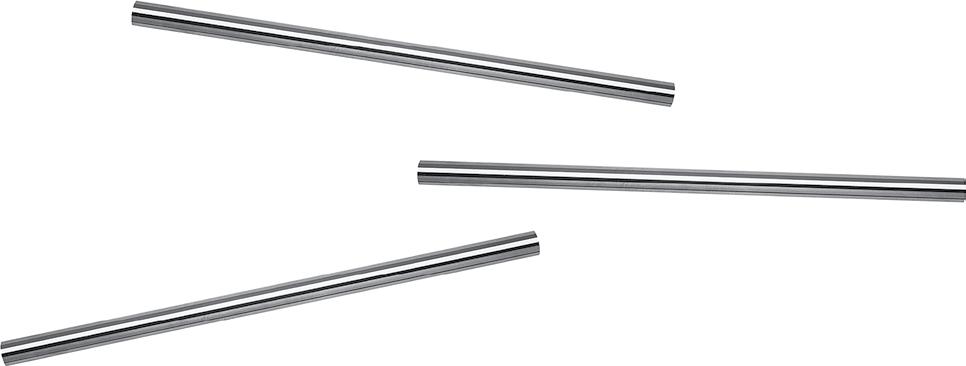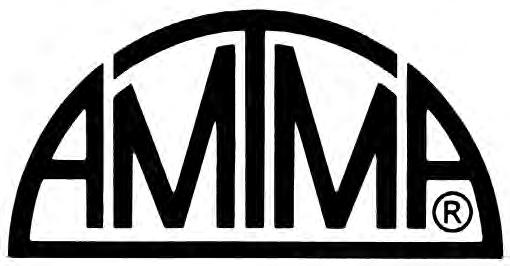
3 minute read
Gage Fact Sheet (Gagemakers Tolerance Chart
What are Gages used for?
Fixed limit gages are primarily used to check dimensions and geometries; plug gages check internal and ring gages external dimensions and geometries. They effectively ensure that a part being measured is within its designed tolerance limits. Fixed limit gages are highly accurate, economical and easy to use.
Principles of Go/NoGo Gaging
To use as a "Go/NoGo" functional check, try and fit both the "Go" and "NoGo" gages into or onto a part being measured. The measured part passes if the "Go" gage fits and the "NoGo" doesn't, otherwise the part fails. A "Go/NoGo" check is strictly a pass/fail test. The actual part size is never measured.
Types of Fixed Limit Gages
Plug gages are available in two types, plain cylindrical and thread, and in several popular styles: reversible, taperlock and trilock. Style is usually determined by the size of the gage. Ring gages are also available as plain cylindrical and thread type gages.
Wear Resistance and Tolerance
Gages are available in tool steel, Black Guard™, chrome plate, and carbide. Chrome plate and carbide are harder and therefore provide additional wear resistance. A choice of tolerance is also available. See chart for explanation of Gagemaker's tolerances.
Calculate Gage Tolerance
Normal practice for determining gage tolerance is to allow 10% of product tolerance to be divided between the "Go" and "NoGo"
Gage Fact Sheet
GAGEMAKER'S TOLERANCE CHART (ASME B89.1.5)
Diameter Range XXX XX X Y Z ZZ
Above - Including Inch .010" - .825" .000010" .000020" .000040" .000070" .0001" .0002" .825" - 1.510" .000015" .000030" .000060" .000090" .00012" .00024" 1.510" - 2.510" .000020" .000040" .000080" .00012" .00016" .00032" 2.510" - 4.510" .000025" .000050" .0001" .00015" .0002" .0004" 4.510" - 6.510" .000033" .000065" .00013" .00019" .00025" .0005" 6.510" - 9.010" .000040" .000080" .00016" .00024" .00032" .00064" 9.010" - 12.010" .000050" .0001" .0002" .0003" .0004" .0008" Metric .254mm - 20.96mm .00025mm .00051mm .00102mm .00178mm .00254mm .00508mm 20.96mm - 38.35mm .00038mm .00076mm .00152mm .00229mm .00305mm .00610mm 38.35mm - 63.75mm .00051mm .00102mm .00203mm .00305mm .00406mm .00813mm 63.75mm - 114.55mm .00064mm .00127mm .00254mm .00381mm .00508mm .01016mm 114.55mm - 165.35mm .00084mm .00165mm .00330mm .00483mm .00635mm .01270mm 165.35mm - 228.85mm .00102mm .00203mm .00406mm .00610mm .00813mm .01626mm 228.85mm - 305.05mm .00127mm .00254mm .00508mm .00762mm .01016mm .02032mm
gages. For plug gages "Go" is normally a plus tolerance and "NoGo" a minus tolerance. For ring gages the opposite is true; "Go" is normally a minus tolerance and "NoGo" a plus tolerance. Using this practice as a guideline, gage tolerance is always included in the part tolerance and accounts for up to 10%. This means that 10% of good product could potentially fail the inspection but that no bad product would ever pass!
Care and Use of Gages
1.) Dimensions to be gaged must be cleaned and free from burrs to prevent gaging interference. 2.) Gage should be turned slowly into or onto the part being checked. The fit should be snug but not forced. Air flats on a "Go" gage can facilitate the inspection of blind holes where air pressure is a problem.
3.) Temperature of the gage and the part should be the same. This is because of the effects of thermal
expansion on material. The normal temperature at which gages are calibrated is 68 degrees
Fahrenheit. This is therefore the best temperature at which both part and gage should be when inspected. This effectively eliminates any error due to thermal expansion. 4.) Gages should be protected from exposure to excessive heat, moisture, and corrosive chemicals. After use, gages should be cleaned and then coated with a thin-film rust preventative and stored properly. 5.) Gages should be periodically calibrated to ensure accuracy.
Gages and "Go" gages in particular, will wear with normal use and require recalibration.
Frequency of calibration is dependent on such factors as frequency of use, part abrasiveness, tolerance, and applicable quality procedures.
All gages should be monitored and maintained accordingly.









